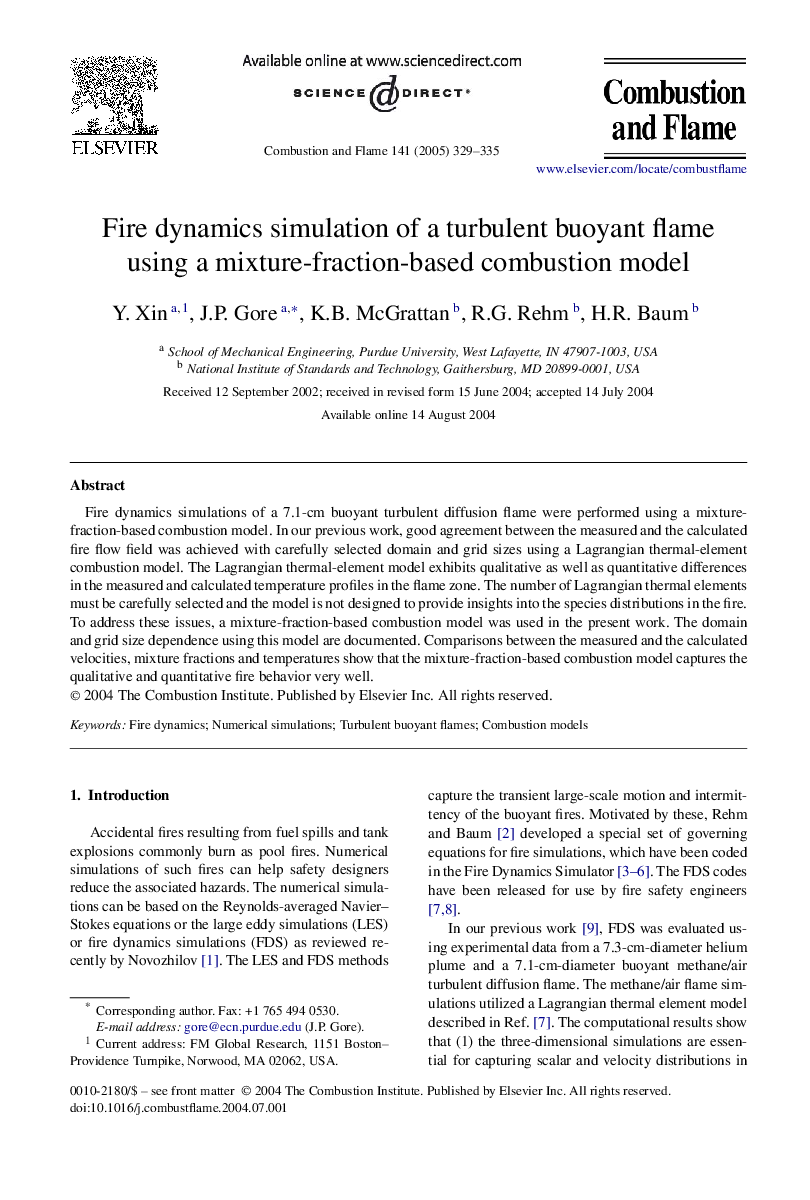| Article ID | Journal | Published Year | Pages | File Type |
|---|---|---|---|---|
| 10264456 | Combustion and Flame | 2005 | 7 Pages |
Abstract
Fire dynamics simulations of a 7.1-cm buoyant turbulent diffusion flame were performed using a mixture-fraction-based combustion model. In our previous work, good agreement between the measured and the calculated fire flow field was achieved with carefully selected domain and grid sizes using a Lagrangian thermal-element combustion model. The Lagrangian thermal-element model exhibits qualitative as well as quantitative differences in the measured and calculated temperature profiles in the flame zone. The number of Lagrangian thermal elements must be carefully selected and the model is not designed to provide insights into the species distributions in the fire. To address these issues, a mixture-fraction-based combustion model was used in the present work. The domain and grid size dependence using this model are documented. Comparisons between the measured and the calculated velocities, mixture fractions and temperatures show that the mixture-fraction-based combustion model captures the qualitative and quantitative fire behavior very well.
Related Topics
Physical Sciences and Engineering
Chemical Engineering
Chemical Engineering (General)
Authors
Y. Xin, J.P. Gore, K.B. McGrattan, R.G. Rehm, H.R. Baum,
